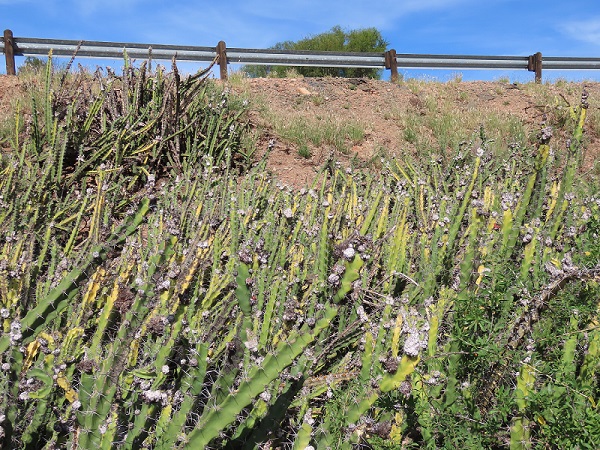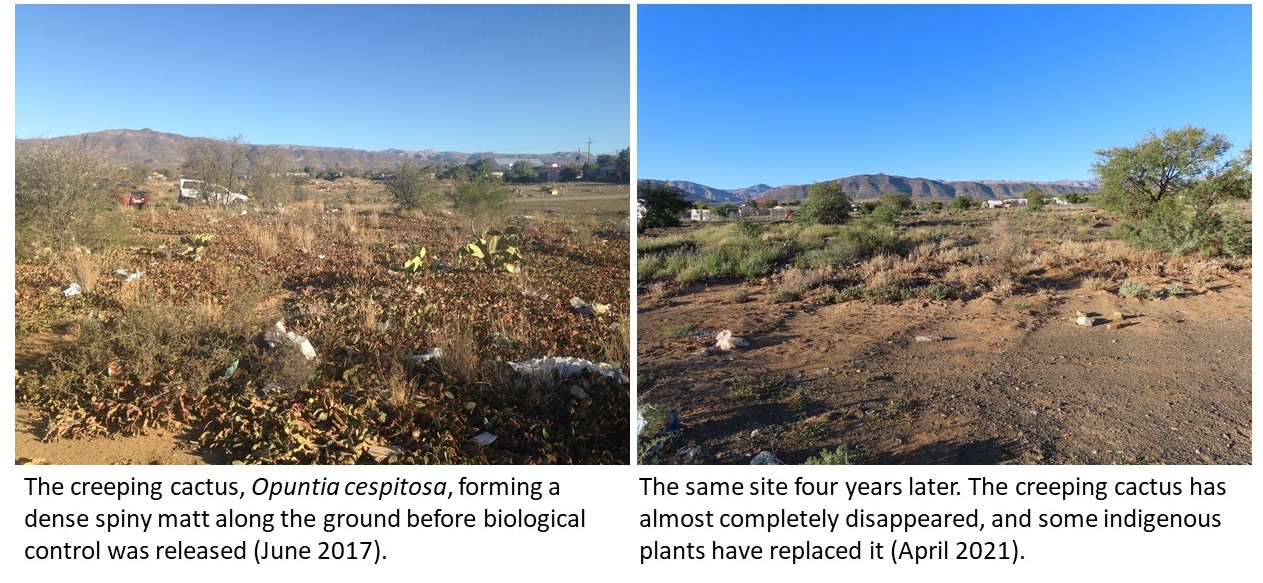
Some of the most problematic invasive alien plants in the arid parts of South Africa are cactus species. Infestations of invasive alien cacti are harmful to agriculture and natural ecosystems. The dense spiny thickets exclude indigenous fauna and flora, reduce grazing capacity, and restrict access of wildlife and livestock to shade, grazing and water sources.
Most of the cactus species in the Klein Karoo were introduced to the region as garden plants, but have escaped the gardens and formed large populations in areas used for conservation and farming. Thankfully, biological control can effectively and safely control invasive alien cacti without doing any harm to indigenous flora or the environment.
The CBC has released biological control agents on three invasive cacti in the Klein Karoo and a field trip to the area was conducted in March this year to assess the impacts of the agents. Harrisia balansae, a tall cactus tree from South America, is forming very dense thickets along the sides of the Meiringsrivier near De Rust. The biological control agent, a galling-mealy bug called Hypogeococcus, is starting to kill plants and has spread to every shoot across the entire infestation, making it impossible for the cactus to produce fruit and spread further down the river.
The same agent has also been used to control another very closely related cactus species called Harrisia martinii. This cactus species is smaller than H. balansae, and is therefore killed by the agent more quickly. A large population of H. martinii escaped from a garden in the town of Prince Albert many years ago and had formed a widespread and dense infestation in adjacent farmlands used from grazing of small livestock. After a few years the agent has killed over 95% of the plants and the few small plants that remain are heavily infested with the agent. These few remaining plants are important for maintaining control as they are sources of the agent. The plant will never disappear completely, but it will never become problematic again.
A different biological control agent, a cochineal insects, was used to control the North American creeping cactus, Opuntia cespitosa, in the areas surrounding Prince Albert. Large patches of land were covered in dense matts of this cactus, but the biological control agent has reduced the density of the cactus by over 80%.
Thank you to DFFE:NRM and the DFFE Biodiversity Officers for funding and supporting this initiative.

